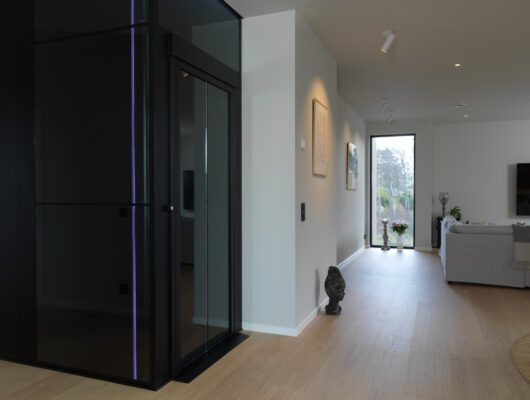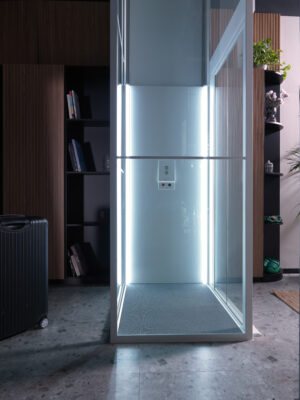Traction Elevator – How Does it Work?
Traction elevators are a type of elevator system that uses a motor and ropes or cables to move the elevator car. They are commonly found in tall buildings and are known for their speed, efficiency, and smooth operation. However, when it comes to installing a traction elevator in a home, there are several factors to consider.



Advantages and Disadvantages for Home Use
In terms of operation, traction elevators work by using a motor to wind a rope or cable around a drive sheave. The rope or cable is attached to the top of the elevator car, and as the motor winds the rope or cable, it pulls the elevator car up or down. The elevator car is counterbalanced by a weight that travels with it, and the weight of the counterbalance is proportional to the weight of the elevator car and its load.Benefits of Traction Lifts:
When it to comes to home use it may not be beneficial but for commercial and tall building Traction Lifts offer several advantages like:1. Ability to Handle Heavy Loads
Traction elevators are built to manage heavy loads with ease. Their cable-driven mechanism, combined with counterweights, ensures safe and efficient transportation of goods and materials. This makes them a perfect choice for commercial buildings, shopping complexes, and industrial facilities.2. Flexible Design Options
Traction elevators provide extensive design flexibility, enabling building owners to customize them to suit both the aesthetic and functional needs of their property. From selecting car interior materials to choosing lighting and control systems, these elevators can be tailored to deliver a seamless and visually appealing look.3. Smooth and Comfortable Ride
Another key benefit of traction elevators is their smooth and comfortable ride. The cable-driven system ensures a stable and refined experience for passengers, while their quiet operation enhances the building’s ambiance, creating a more pleasant environment for both occupants and visitors.Disadvantages of Traction Elevators
While traction elevators offer several advantages for tall buildings, they may not be the best choice for a home. One of the main disadvantages of traction elevators for home use is their cost. They are more expensive to install and maintain compared to other types of elevators, such as screw and nut driven lifts. Additionally, traction elevators also require more power compared to hydraulic elevators, leading to higher energy bills. Another disadvantage of traction elevators for home use is their complexity. They require specialised equipment and expertise to install and repair, which can be more expensive and time-consuming compared to other types of elevators. In the event of a malfunction, it may be difficult to find a qualified technician to repair the elevator, leading to longer downtime. Finally, traction elevators are not ideal for small homes as they require a considerable amount of space. They also tend to be noisy compared to other types of elevators, which can be a concern for homeowners who value a quiet living environment.Conclusion
In conclusion, while traction elevators offer several advantages for tall buildings, they may not be the best choice for a home. Homeowners should consider the cost, complexity, and space requirements of traction elevators before installation. For elevators designed specifically for homes - get inspiration from SWIFT Pro >>










